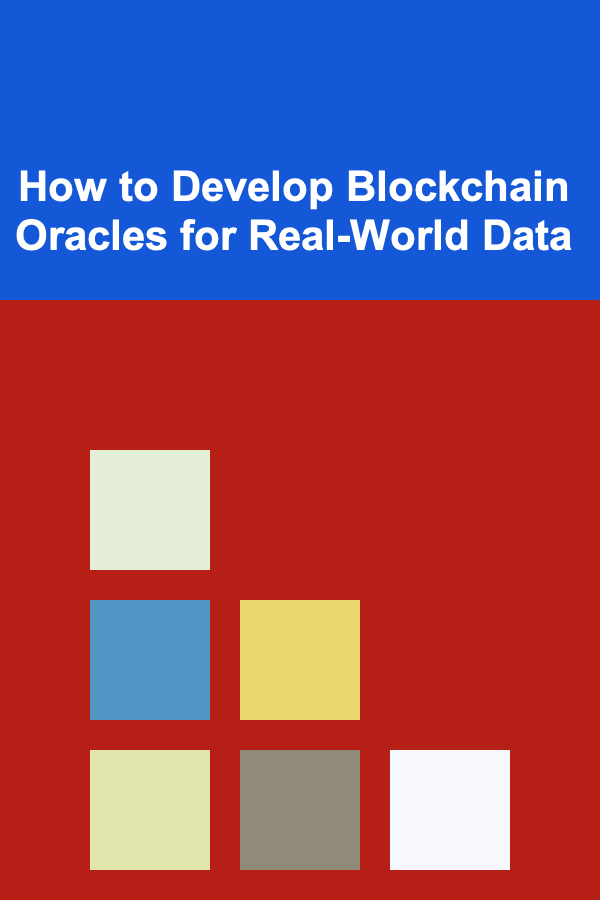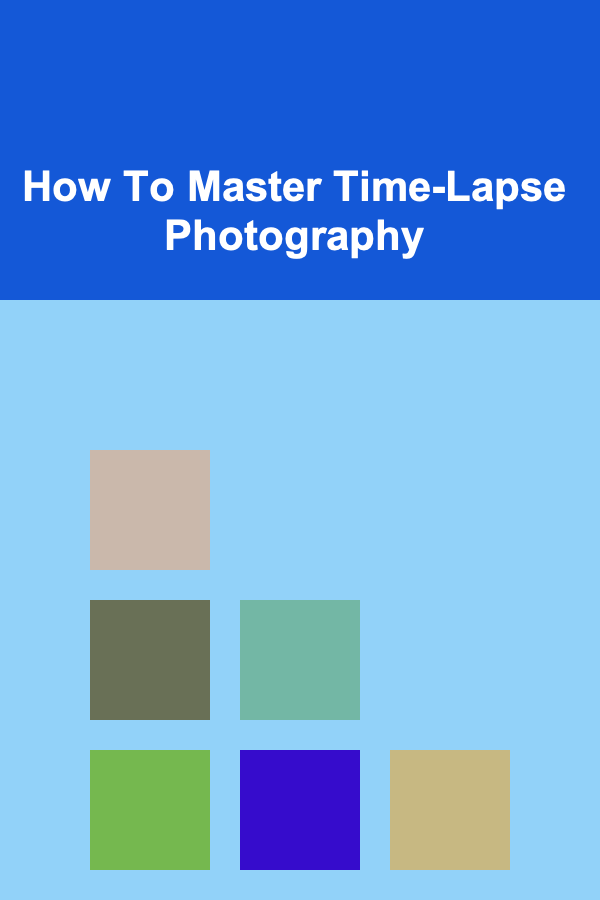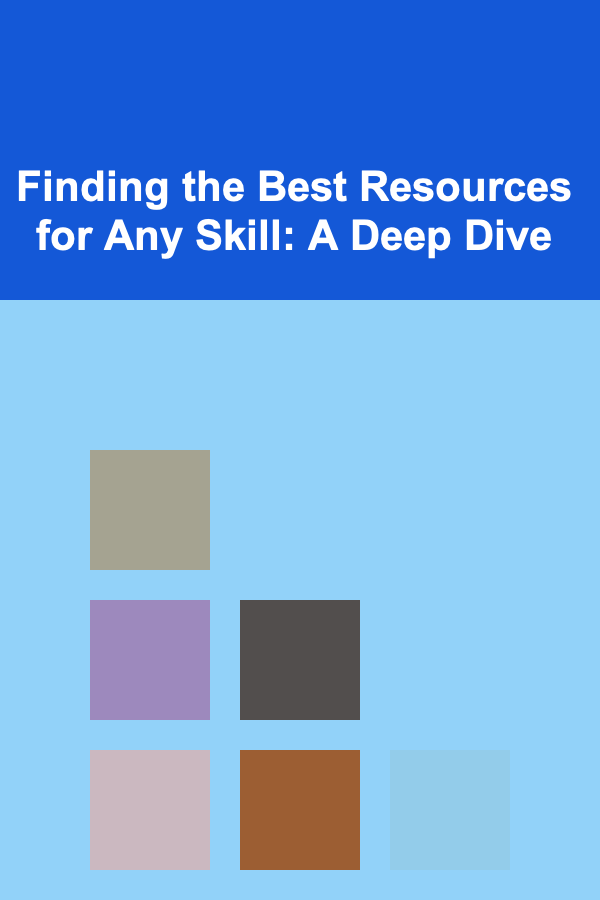
How to Develop Blockchain Oracles for Real-World Data
ebook include PDF & Audio bundle (Micro Guide)
$12.99$11.99
Limited Time Offer! Order within the next:

Blockchain technology has revolutionized the way we perceive and interact with data. It provides a decentralized, immutable ledger that enhances security, transparency, and trust. However, despite its remarkable capabilities, one of the biggest challenges of blockchain lies in its ability to access external, real-world data. This is where blockchain oracles come into play. Oracles act as intermediaries, enabling smart contracts to securely interact with real-world data sources outside the blockchain.
In this article, we will explore the concept of blockchain oracles, their importance, how they work, and the process of developing oracles for real-world data. We will delve into the technical challenges, security concerns, and best practices that developers should consider when building oracles for blockchain applications.
Understanding Blockchain Oracles
1.1 What is a Blockchain Oracle?
A blockchain oracle is an external data provider that feeds real-world information into a blockchain network. Oracles can provide various types of data, such as market prices, weather conditions, or sports results, which can trigger smart contract executions on a blockchain. Smart contracts, which are self-executing contracts with predefined rules, require access to data outside of the blockchain to fulfill their terms. This is where oracles bridge the gap between the digital world of blockchain and the physical world.
1.2 Why are Oracles Important?
Smart contracts are typically limited to data stored on the blockchain, making it difficult for them to interact with real-world conditions. Oracles solve this issue by supplying the data that smart contracts need to trigger their conditions. For example, a smart contract for a decentralized insurance platform might need real-time weather data to process claims for flight delays caused by weather conditions.
Without oracles, smart contracts would be restricted to operating in isolation from the real world, limiting their usefulness and functionality. Oracles enable the automation of complex business logic and processes, such as decentralized finance (DeFi), supply chain management, and insurance, by connecting blockchain systems with the broader world of data.
Types of Blockchain Oracles
Blockchain oracles can be categorized into different types based on how they retrieve and deliver data. These categories include:
2.1 Software Oracles
Software oracles fetch data from online sources such as websites, APIs, and databases. They are designed to interface with the internet and retrieve relevant data for smart contracts. For example, a price oracle may pull the current price of Bitcoin from a cryptocurrency exchange's API and provide it to a smart contract for execution.
2.2 Hardware Oracles
Hardware oracles collect real-world data from physical devices. These oracles interact with sensors, IoT devices, and machines to feed real-world information into a blockchain. For instance, a temperature sensor could feed data to a smart contract to trigger the execution of actions based on temperature changes.
2.3 Consensus Oracles
Consensus oracles rely on multiple data sources or participants to verify and provide data. This helps improve the reliability and trustworthiness of the data provided to the blockchain. Consensus oracles aggregate data from several different sources and use consensus algorithms to determine the most accurate and reliable value. This type of oracle reduces the risk of manipulation and ensures that the data provided is trustworthy.
2.4 Inbound Oracles
Inbound oracles are used to bring external data into the blockchain. They can fetch data from APIs, databases, and other external sources to provide real-time information to smart contracts. Inbound oracles allow smart contracts to trigger actions based on dynamic and real-world events.
2.5 Outbound Oracles
Outbound oracles are used to send data from the blockchain to the outside world. These oracles can trigger actions outside the blockchain network, such as initiating a bank transfer or updating a database. While less common than inbound oracles, outbound oracles can be useful in certain use cases where blockchain actions need to trigger events outside the network.
2.6 Decentralized Oracles
Decentralized oracles consist of multiple independent nodes that provide data to a blockchain. These oracles are designed to ensure data accuracy, transparency, and security by relying on multiple sources and using decentralized consensus mechanisms. The decentralized nature of these oracles helps to avoid the risks associated with a single point of failure and reduces the risk of manipulation.
How Blockchain Oracles Work
To understand how oracles operate within blockchain systems, it's important to look at the basic flow of data from the real world into the blockchain network:
- Data Request: A smart contract requires data from the real world to execute its predefined logic.
- Oracle Query: The smart contract queries an oracle for the necessary data. The oracle is instructed to provide data from a trusted external source.
- Data Collection: The oracle collects the data from the external source, such as a website, sensor, or API, ensuring the data is accurate and timely.
- Data Delivery: The oracle delivers the collected data to the blockchain or smart contract. This information is used by the smart contract to execute the next action in the contract.
- Smart Contract Execution: Based on the received data, the smart contract executes the next steps. This could be transferring tokens, updating the state, or triggering other actions.
While this process may seem straightforward, there are several challenges and concerns involved, particularly with the security and reliability of the data being provided.
Developing Blockchain Oracles for Real-World Data
Developing oracles for blockchain applications involves several key steps, from selecting data sources to building the infrastructure that delivers this data to the blockchain network. Below are the key steps involved in creating blockchain oracles.
4.1 Selecting the Right Data Sources
The first step in developing a blockchain oracle is to choose reliable data sources. Depending on the use case, this could involve selecting APIs, websites, IoT devices, or other external data sources. It's crucial to ensure that the data source is reliable, accurate, and frequently updated. Some popular sources of data include:
- Cryptocurrency exchanges (for price data)
- Weather services (for weather data)
- Sports results providers (for sports betting or insurance)
- IoT sensors (for environmental monitoring)
It's also important to consider how the data is accessed. For example, some data sources may require an API key, while others may provide open data.
4.2 Designing the Oracle Architecture
Once the data source is selected, the next step is to design the oracle architecture. This includes deciding how data will be collected, verified, and delivered to the blockchain. There are several components to consider in the architecture:
- Oracle Node: The oracle node is responsible for collecting the data and feeding it into the blockchain network. The node needs to be highly available and performant to ensure timely and accurate data delivery.
- Data Aggregation: In some cases, data from multiple sources may need to be aggregated to ensure accuracy and avoid manipulation. Aggregation mechanisms such as consensus oracles can be used to provide a reliable data point.
- Security: Security is critical when designing oracles. Developers must ensure that data is transmitted securely, that the oracle node is not susceptible to tampering or attacks, and that the oracle itself cannot be manipulated by malicious actors.
- Data Verification: The verification process ensures that the data provided by the oracle is legitimate. One common approach is to use multiple independent oracles to cross-check data and avoid discrepancies.
4.3 Implementing Smart Contracts to Interact with Oracles
The next step is to implement the smart contracts that will interact with the oracle. The smart contract must be designed to request data from the oracle, process the data, and execute predefined actions. The interactions between the oracle and smart contract should be optimized for efficiency and security.
- Requesting Data: The smart contract sends a request to the oracle for specific data. This request can include parameters such as the type of data needed and the frequency of updates.
- Handling Responses: Once the oracle responds with the data, the smart contract must handle the response appropriately. If the data meets the contract's conditions, the contract will execute its logic (e.g., transferring tokens or updating state).
- Error Handling: In cases where the oracle fails to deliver data or returns incorrect data, the smart contract should have error-handling mechanisms in place. For example, the contract could revert the transaction or trigger an alternative action if data is unavailable or inconsistent.
4.4 Testing the Oracle
After developing the oracle and integrating it with the smart contract, it is crucial to test the entire system. Testing ensures that the oracle provides accurate and timely data and that the smart contract behaves as expected when interacting with the oracle. Developers should conduct both functional and security testing, including:
- Unit Testing: Testing the oracle and smart contract individually to verify their functionality.
- Integration Testing: Ensuring that the oracle and smart contract work together seamlessly.
- Stress Testing: Simulating real-world usage scenarios to evaluate the system's scalability and performance.
- Security Audits: Conducting security audits of the oracle and smart contract code to identify and mitigate vulnerabilities.
4.5 Deploying the Oracle
Once the oracle has been thoroughly tested, it can be deployed to the blockchain network. Deployment involves setting up the oracle node and ensuring that it is connected to the blockchain and capable of sending data in real time. It's important to monitor the oracle during and after deployment to ensure it remains reliable and secure.
Security Considerations in Blockchain Oracles
Security is one of the most critical aspects when developing blockchain oracles. Oracles are vulnerable to a range of attacks, such as data manipulation, denial of service (DoS) attacks, and single points of failure. Here are some key security considerations when developing oracles:
5.1 Oracle Manipulation
Since oracles provide external data to the blockchain, they are susceptible to manipulation. If a malicious actor can control the oracle, they could provide false data, potentially exploiting smart contracts. To mitigate this risk, developers should use multiple independent oracles (decentralized oracles) and implement consensus mechanisms to verify data before feeding it into the blockchain.
5.2 Single Points of Failure
If a single oracle node becomes unavailable or compromised, it can disrupt the entire blockchain application. To reduce the risk of single points of failure, developers should deploy multiple oracle nodes across different locations and networks. This redundancy ensures that if one node fails, others can step in to continue providing data.
5.3 Data Integrity
Data integrity is paramount to the reliability of the oracle. Developers should use secure data transmission methods, such as encryption, to prevent tampering or interception of data. Additionally, oracles should have robust validation mechanisms in place to verify that the data is accurate before sending it to the blockchain.
Conclusion
Blockchain oracles are an essential component in bridging the gap between blockchain networks and the real world. They enable smart contracts to interact with real-world data, unlocking new possibilities for decentralized applications in fields such as finance, insurance, and supply chain management. Developing oracles for real-world data requires a thorough understanding of data sources, security concerns, and the architecture of both the blockchain and oracle systems.
By following best practices, ensuring security, and leveraging decentralized oracle networks, developers can create reliable, accurate, and secure oracles that enhance the functionality of smart contracts and blockchain applications. As blockchain technology continues to evolve, oracles will play an increasingly important role in enabling the next generation of decentralized applications.

How to Create Ambiance with Budget-Friendly Lighting
Read More
How to Find and Avoid Financial Scams
Read More
How to Install HomeKit Cameras for Enhanced Surveillance
Read More
How to Save Money on Laundry While Traveling
Read More
How To Master Time-Lapse Photography
Read More
Finding the Best Resources for Any Skill: A Deep Dive
Read MoreOther Products

How to Create Ambiance with Budget-Friendly Lighting
Read More
How to Find and Avoid Financial Scams
Read More
How to Install HomeKit Cameras for Enhanced Surveillance
Read More
How to Save Money on Laundry While Traveling
Read More
How To Master Time-Lapse Photography
Read More